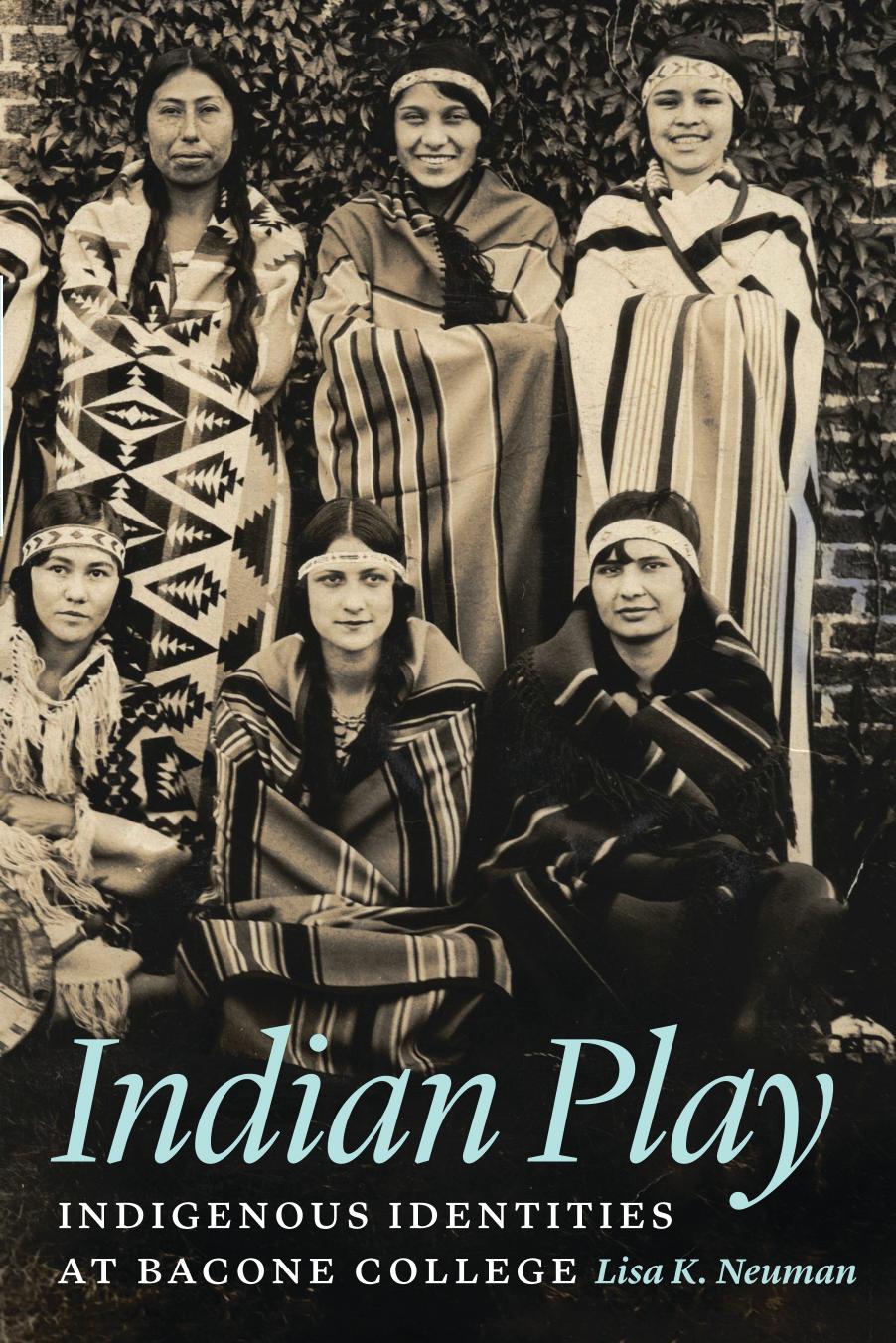Indian Play by Lisa K. Neuman

Author:Lisa K. Neuman [Neuman, Lisa K.]
Language: eng
Format: epub, pdf
ISBN: 978-1-4962-0932-0
Publisher: University of Nebraska Press
Published: 2013-04-14T16:00:00+00:00
CHAPTER SIX
Painting Culture
STUDYING INDIAN ART AT BACONE
Those [students] from back east were a little removed from their ways but had a portion of it. Then we’d do research in the Indian room [of the library] on old ceremonies so that way they could preserve it and go back to teach it.
— DICK WEST (WAH-PAH-NAH-YAH), 1994
Under the leadership of alumnus Dick West, whose tenure as head of Bacone’s art department spanned twenty-three years, Bacone’s program in Indian arts became an important source of new Indian identities. When Blue Eagle’s former student arrived on campus in the role of teacher in the fall of 1947, he set out to revitalize Bacone’s art program and to inspire his students to use art as a means of recapturing cultural knowledge for future generations of Indians.
DICK WEST
When he was only four years old, a young Cheyenne named Walter Richard (Dick) West was taken to the Concho Indian School in Oklahoma. While at Concho, West suffered physical and mental abuse from teachers and school administrators. He was not allowed to use his father’s Cheyenne name, Wah-Pah-Nah-Yah (“Lightfoot Runner”), and he was severely punished for attempting to speak his native Cheyenne. One day when he was fifteen years old, West fled Concho, never to return.1
In the mid-1930s, after spending time at Haskell Institute, West enrolled in Bacone’s junior college. His brother Harvey was also enrolled at Bacone during this time. Dick soon discovered that Bacone’s teachers and administrators were not likely to use forms of physical punishment in dealing with students, and he found the environment at Bacone to be a refreshing contrast to life at Concho.2 In Bacone’s more hospitable environment, West began to thrive, actively participating in a number of the school’s cultural programs. West played football for Bacone as a member of the school’s Red Rovers squad.3 He also helped to organize Bacone’s original Indian Club, and he was an active member of the Singing Redmen, often performing Indian sign language for the latter group’s concerts.4 During his summers, West taught archery, Indian “lore,” painting, and dances as a camp counselor at Camp Mowglis in New Hampshire. He also began to paint murals.5 Although he claims that he “didn’t really think about art until I got to Bacone and ran into Acee Blue Eagle,” West quickly became one of Blue Eagle’s most famous and influential students.6
Following his graduation from Bacone in 1938, West enrolled at the University of Oklahoma to study with Oscar Jacobson.7 West’s training at Bacone had given him the necessary credentials to enroll as a regular degree student in the university’s art program. West took an instant liking to Jacobson, whom he described as having a refreshingly complex view of Indians.8 West found that Jacobson, as a Swedish American, tended not to group all Indians together as did many “Anglo-Saxons.”9 He also found Jacobson’s support of Indian students to be the opposite of the racism he encountered from some white students and instructors at OU.10
While a student at Bacone, West had fallen in love with a young piano teacher named Maribelle McCrea.
Download
This site does not store any files on its server. We only index and link to content provided by other sites. Please contact the content providers to delete copyright contents if any and email us, we'll remove relevant links or contents immediately.
| African-American Studies | Asian American Studies |
| Disabled | Ethnic Studies |
| Hispanic American Studies | LGBT |
| Minority Studies | Native American Studies |
Cecilia; Or, Memoirs of an Heiress — Volume 1 by Fanny Burney(32503)
Cecilia; Or, Memoirs of an Heiress — Volume 2 by Fanny Burney(31913)
Cecilia; Or, Memoirs of an Heiress — Volume 3 by Fanny Burney(31900)
The Great Music City by Andrea Baker(31761)
We're Going to Need More Wine by Gabrielle Union(19004)
All the Missing Girls by Megan Miranda(15789)
Pimp by Iceberg Slim(14441)
Bombshells: Glamour Girls of a Lifetime by Sullivan Steve(14024)
For the Love of Europe by Rick Steves(13643)
Talking to Strangers by Malcolm Gladwell(13300)
Norse Mythology by Gaiman Neil(13284)
Fifty Shades Freed by E L James(13189)
Mindhunter: Inside the FBI's Elite Serial Crime Unit by John E. Douglas & Mark Olshaker(9268)
Crazy Rich Asians by Kevin Kwan(9225)
The Lost Art of Listening by Michael P. Nichols(7456)
Enlightenment Now: The Case for Reason, Science, Humanism, and Progress by Steven Pinker(7275)
The Four Agreements by Don Miguel Ruiz(6705)
Bad Blood by John Carreyrou(6586)
Weapons of Math Destruction by Cathy O'Neil(6221)
